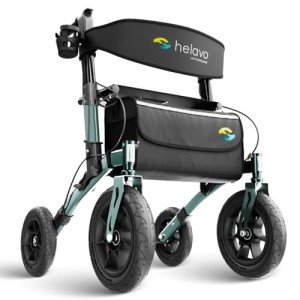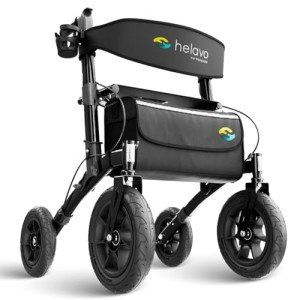
Brake Walker
Add a review FollowOverview
-
Founded Date May 15, 1964
-
Sectors Marketing
-
Posted Jobs 0
-
Viewed 2
Company Description
The Reasons Indoor Walker Is More Difficult Than You Imagine
The Comprehensive Guide to Indoor Walkers: Benefits, Features, and Recommendations
Indoor walkers, often developed for safety and ease of usage, are indispensable aids for people with mobility problems, seniors, or anyone recuperating from surgery or injury. These devices offer stability, support, and self-confidence, permitting users to maintain an active lifestyle within the comfort of their homes. This article explores the various aspects of indoor walkers, including their benefits, key features, elements to consider when purchasing one, and a contrast of the Top Performance Rollator-rated models offered in the market today.

Advantages of Using an Indoor Walker
Indoor walkers use a multitude of benefits, from safety to health improvement. Here are some of the most significant advantages:
| Benefit | Description |
|---|---|
| Increased Stability | Supplies support to avoid falls, making it more secure to stroll. |
| Boosted Mobility | Motivates greater movement throughout the home. |
| Enhanced Confidence | Users feel more secure, decreasing stress and anxiety about moving. |
| Physical Rehabilitation | Help in the recovery process for post-surgery patients. |
| Much better Posture | Promotes appropriate body alignment while walking. |
| Social Interaction | Permits users to engage more with family and visitors. |
| Customizable Features | Numerous models deal with personalized requirements such as height adjustments. |
Key Features of Indoor Walkers
When picking an indoor walker, it is vital to evaluate its features to ensure it satisfies the user’s particular needs. Here are some features to think about:
- Adjustable Height: Ensures that the walker fits the user’s body size for optimal comfort.
- Foldability: Many walkers can be folded for easy storage and transport, making them practical for those who might travel.
- Weight Capacity: Check the maximum weight the walker can support to guarantee usability.
- Design Options: Options may include traditional walkers, rolling walkers with wheels, or specialized designs for added functionality.
- Hand Grips: Ergonomic grips assist supply comfort and minimize the risk of slipping.
- Brakes: A reliable braking system is essential for safety when using rolling walkers.
- Extra Accessories: Features like storage baskets or trays can be beneficial for carrying individual products.
Factors to Consider When Purchasing an Indoor Walker
Choosing the best indoor walker can significantly affect the user’s mobility and lifestyle. Here are some aspects to bear in mind:
1. User’s Condition
- Evaluate the mobility limitations or recovery requirements of the user.
2. Type of Walker
- Figure out whether a standard walker or a rolling walker is better suited based upon the user’s capability to raise the walker or the requirement for mobility as they stroll.
3. Home Environment
- Consider the area in the home where the walker will be utilized. Exists enough space to maneuver through doorways and narrow hallways?
4. Individual Preference
- Visual appeals and color can matter as users may feel more comfortable using a walker that they discover visually appealing.
5. Maintenance
- Think about the upkeep and sturdiness of the walker. Some products need more upkeep than others.
6. Price Point
- Indoor walkers can vary substantially in price. Figure out a budget plan that meets both quality and price.
Top Indoor Walkers: A Comparison
The market features various indoor walkers designed to accommodate different needs. Below is a relative table showcasing a few of the best indoor walkers currently offered.
| Walker Model | Type | Weight Capacity | Adjustable Height | Foldable | Cost Range |
|---|---|---|---|---|---|
| Medline Heavy Duty Walker | Standard Walkers | Up to 400 pounds | Yes | Yes | ₤ 50 – ₤ 70 |
| Drive Medical Innovative Rollator Features | Rolling Walker | Approximately 300 pounds | Yes | Yes | ₤ 70 – ₤ 100 |
| Hugo Mobility Walker | Rolling Walker | As much as 250 pounds | Yes | Yes | ₤ 60 – ₤ 90 |
| Nova Medical Walker | Standard Walkers | As much as 300 lbs | Yes | Yes | ₤ 85 – ₤ 120 |
| Zler Folding Walker | Standard Walkers | Approximately 300 lbs | Yes | Yes | ₤ 40 – ₤ 70 |
Regularly Asked Questions (FAQ)
1. Do indoor walkers have a weight limitation?
Yes, many indoor walkers have a defined weight capability. It is necessary to select a walker that can support the user’s weight for safety.
2. Can a walker be utilized outdoors?
While indoor walkers can often be utilized outdoors, it’s suggested to utilize walkers particularly designed for outdoor usage, which might offer much better stability and balance on irregular surface areas.
3. How do I identify the proper height for my walker?
The proper height for a Heavy-Duty Rollator Walker is usually waist-high when the user is standing. Users must be able to maintain a natural posture while holding the Best-Selling Walker.
4. How do I tidy and maintain my indoor walker?
Regularly wipe down the walker with a damp cloth and moderate detergent. Examine the brakes, wheels, and any moving parts to ensure they are functioning correctly.

5. How can I improve my comfort while utilizing a walker?
Think about utilizing grips with extra padding or using encouraging shoes. It’s essential to adjust the height of the walker to avoid strain on the back and arms.
Indoor walkers function as essential tools for improving mobility, safety, and self-reliance for individuals with mobility challenges. With different models to choose from, it is essential to think about aspects such as the user’s particular requirements, the home environment, and the walker’s features. By selecting the right indoor walker, users can enhance their quality of life, keep their independence, and continue taking part in everyday activities with confidence.
